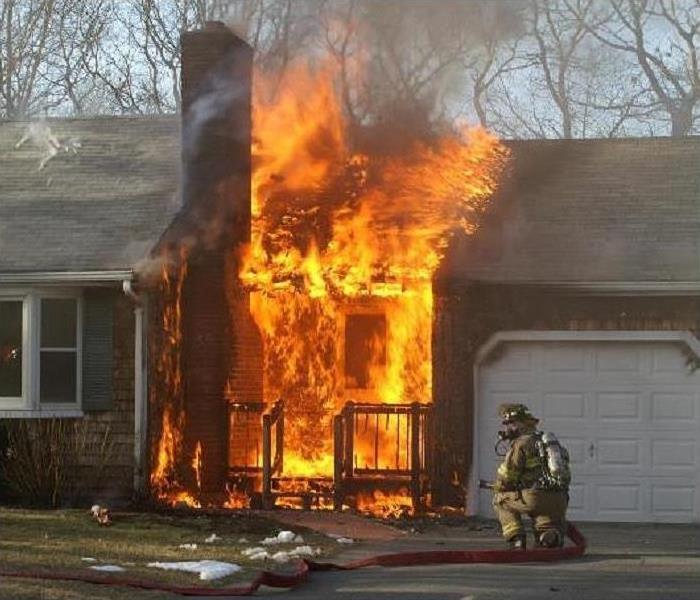Gas Fireplace Hazards
1/22/2020 (Permalink)
Did You Know?
Gas fireplaces might be safer than wood burning fireplaces, but everyone should still take precaution. Fire damage is possible even though you are not burning wood in your fireplace. The misleading thought of “Oh, it won’t happen to me” causes people so much heart ache when it does happen to them. Do not be left in the dark about your gas fireplace. Know the risks and be prepared. Some things you need to know about your gas fireplace is:
The Possible Faulty Gas Valves
Fireplace explosions exist with gas fireplaces. Scary right? Faulty gas valves leak flammable gas into the air and cause explosions that leads to major fire damage in your home.
How does fire place explosions happen? Well, when the valve's "On/Off" switch fails, it continues to seep gas into the fireplace pilot light area. Any little spark or flame can cause the gas in the air to immediately catch fire, and create a powerful explosion.
Chimney and Flue Design Mistake
Another cause of fire explosions in gas fireplaces may be because of chimney and flue design. If you don’t know what a flue is, it’s a duct for smoke and waste gases. Some chimneys are unable to withstand high temperatures, contributing to soot and creosote buildup, because they are designed for natural gas. Creosote is a black, sticky substance formed from liquefied gas. According to the Chimney Safety Institute of America, creosote is the leading cause of chimney fires. Double venting systems worsens the issue and can cause gases to back up into flues connecting to other stoves or furnaces. The resulting backup causes an explosion or leaks carbon monoxide into the home.
Accidental Plugged Burners
Paint and building materials can form over the burner hole port. Ceramic coals or mineral wool may inadvertently be placed over the ports, creating a blockage and unbalanced flame. Consequently, the plugged burner hole can delay fireplace ignition, and cause gas in the fireplace to explode.
Precautions
Call a professional service technician to remove creosote buildup from chimneys and fireplace walls. Gas valves and hose connections leading to the fireplace burner and tank should also be inspected by a professional technician. Moreover, check for cracks in the flue lining and firebox, and look for signs of rust and corrosion. Your fireplace should also be equipped with a thermocouple, which shuts off the gas in case the pilot light is extinguished.
At SERVPRO of Brookhaven, McComb & Columbia, we are eager to help you in any way possible! If this unfortunate disaster happens to you, call us immediately! "Faster to Any Size Disaster"
(601) 823-1100
Via Hunker.com



 24/7 Emergency Service
24/7 Emergency Service
